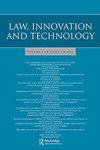人工智能(AI)法律中的多元社会技术想象:以欧盟人工智能法案为例
Q1 Social Sciences
引用次数: 0
摘要
本文探讨了立法者和其他利益相关者如何设想人工智能(AI)带来的潜在利益和挑战。仔细阅读欧盟人工智能法案草案,这是欧盟委员会于2021年4月提出的一项法案,以及非政府组织、企业和商业协会、工会、学术界、公共当局和公民提交的302份回应文件,表明多元的社会技术想象竞争:(1)技术与社会、政治和法律相关的基本特征;(二)法律是否、如何以及在多大程度上能够推动、指导或制约科学技术的发展;(3)法律介入科技争议的程度和应当介入的程度。利益相关者的反馈表明,在人工智能的相关特征应该如何影响法律监管、期望的法律应该是什么样子、法律是否以及如何干预人工智能的专家辩论等方面,立法者存在重大分歧。更重要的是,不同类型的利益相关者在提出问题的内容和解决问题的方式上存在很大差异。本文章由计算机程序翻译,如有差异,请以英文原文为准。
Pluralistic sociotechnical imaginaries in Artificial Intelligence (AI) law: the case of the European Union’s AI Act
ABSTRACT This paper asks how lawmakers and other stakeholders envision the potential benefits and challenges arising from Artificial Intelligence (AI). A close reading of the European Union's draft AI Act, a bill proposed by the European Commission in April 2021, and of 302 response papers submitted by NGOs, businesses and business associations, trade unions, academics, public authorities, and citizens, shows that pluralistic sociotechnical imaginaries contest: (1) the essential characteristics of technology as they relate to society, politics, and law; (2) whether, how and how much law can enable, direct or constrain scientific & technological developments; and (3) the degree to which law does and should intervene into scientific & technological controversies. The feedback from stakeholders reveals major disagreements with the lawmakers in terms of how the relevant characteristics of AI should influence legal regulation, what the desired law should look like, and whether and how the law should intervene into expert debates in AI. What is more, different types of stakeholders diverge considerably in what they problematise and how they do so.
求助全文
通过发布文献求助,成功后即可免费获取论文全文。
去求助
来源期刊

Law, Innovation and Technology
Social Sciences-Law
CiteScore
4.50
自引率
0.00%
发文量
18
期刊介绍:
Stem cell research, cloning, GMOs ... How do regulations affect such emerging technologies? What impact do new technologies have on law? And can we rely on technology itself as a regulatory tool? The meeting of law and technology is rapidly becoming an increasingly significant (and controversial) topic. Law, Innovation and Technology is, however, the only journal to engage fully with it, setting an innovative and distinctive agenda for lawyers, ethicists and policy makers. Spanning ICTs, biotechnologies, nanotechnologies, neurotechnologies, robotics and AI, it offers a unique forum for the highest level of reflection on this essential area.
 求助内容:
求助内容: 应助结果提醒方式:
应助结果提醒方式:


